This is a long post, but at the end of it the wood stove is lit!
The plumbing was quite an involved job, including:
- removing the gas boiler
- connecting up the wood stove
- running pipes from the wood stove to the connection to the hot water cylinder and the radiators (the gas boiler was on the other side of the house...)
- replacing the cold water tank and the feed and expansion tank in the loft (they were very old)
- replace the hot water cylinder for one that can take solar input as well as the wood stove.
The plumbing company we used was CMS plumbing services, who have done a brilliant job. Here's Mick Rennells, taking up floor boards to lay in pipes for the stove connection:
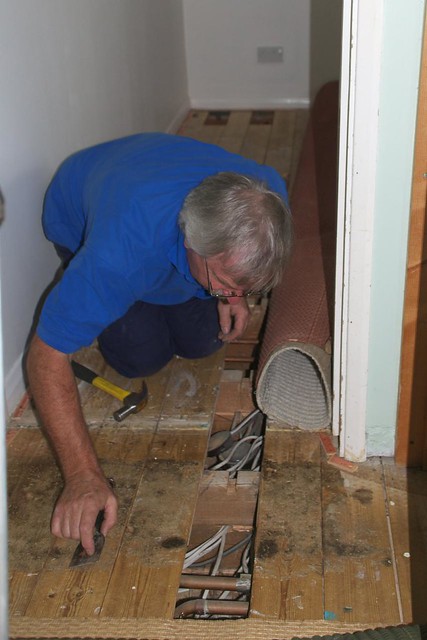
Slots were cut into the joists to take the new pipes:

A wood stove with a boiler needs a chunk of its hot water output to go via a "gravity circuit", or "thermosyphon". This works by the hot water rising, and cold water sinking, so that it will work without a pump. This is needed in case you load up the stove, then go to bed and the power fails, so that it doesn't overheat. For the gravity circuit to work well, it needs to use 28mm pipe, to get a good flow rate. Our gravity circuit connects to the hot water cylinder and the bathroom radiator. We have a second circuit too, in 24mm pipe, which connects to the rest of the radiators and uses a pump. Here you can see the two pairs of pipes, for the gravity and pumped circuits, running under the bedroom floor:

To stop them squeaking when the floor boards move, they rest in small felt pads:

While that was going on, pipes were also being put up the side of the chimney:

Mick put elbows on the top of them:
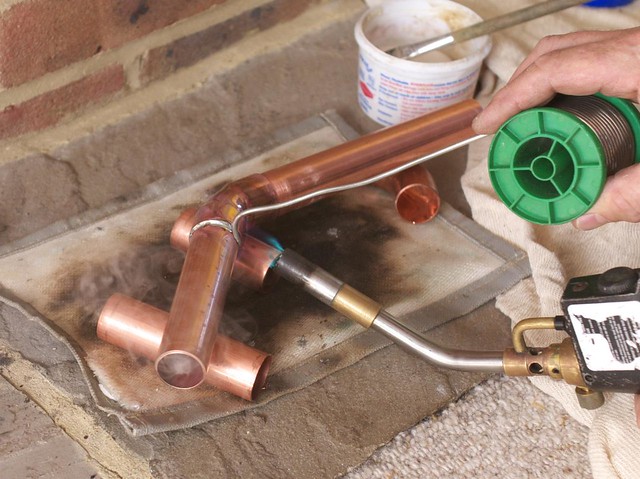
So that they could poke through the ceiling into the bedroom:
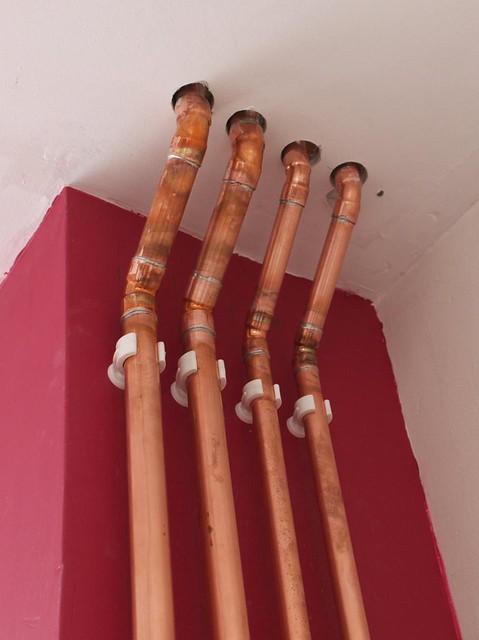

and then be connected up to the pipes already laid under the floor:

Meanwhile, the gas boiler was ripped out, gaining us a cupboard in the kitchen:
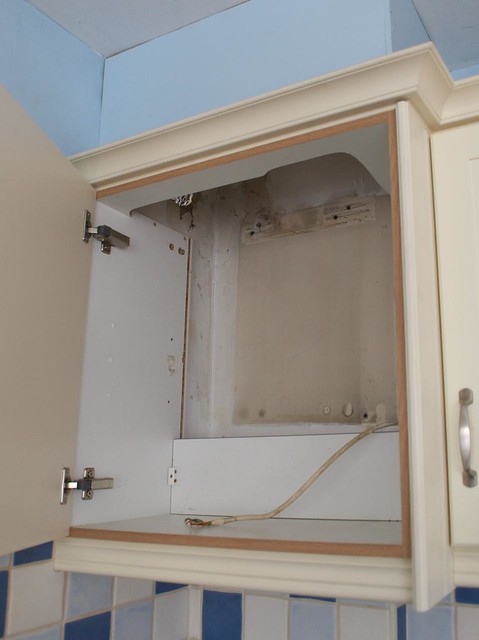
The old hot water cylinder also came out:
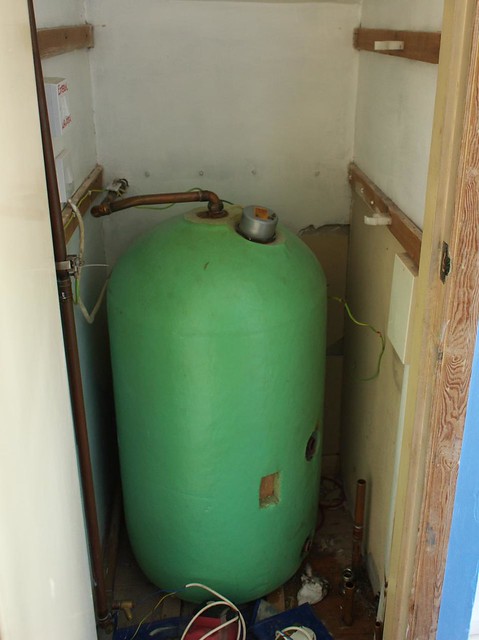
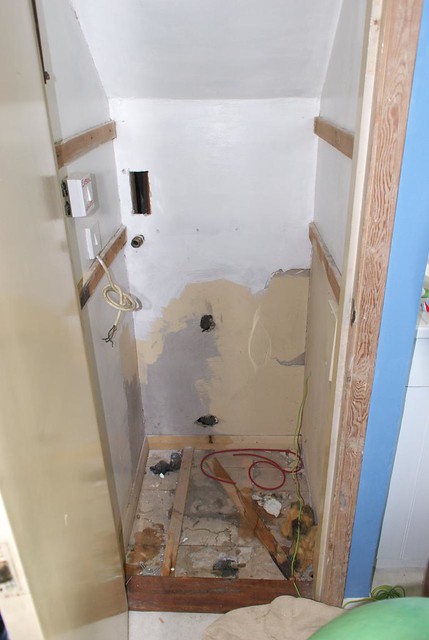
and the new one went in:
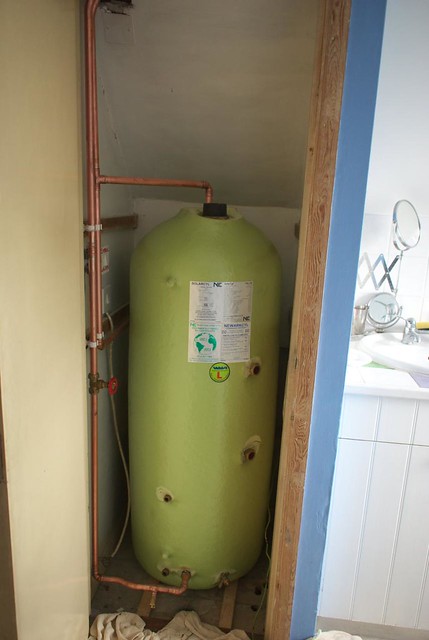
The new cylinder was specified by our solar water heating installer (who is coming soon). It has a 28mm coil at the top to match the gravity circuit for the stove, and a 15mm coil at the bottom that will take the input from the solar tubes. Here it is with the gravity circuit connected:
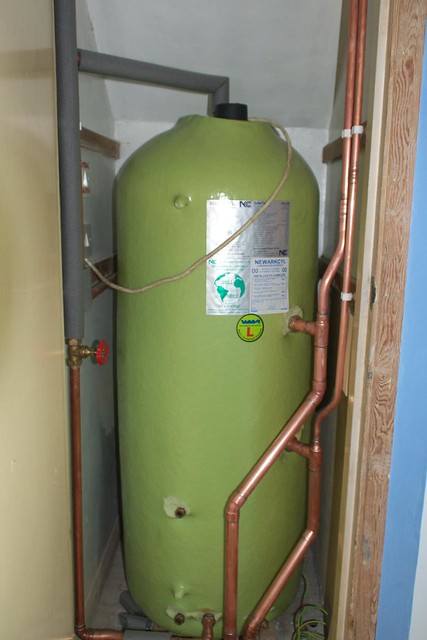
Up in the loft, the water tanks were changed. This wasn't essential for the wood stove, but when you look at the state of the old cold water tank, you can see why we did it:
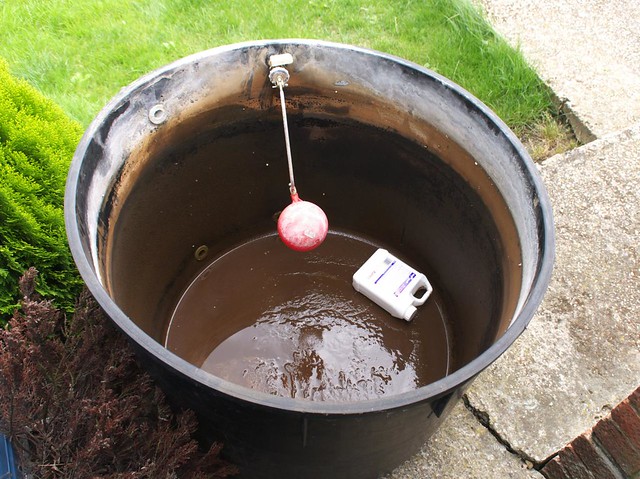
See if you can spot which are the old pipes in the loft that hadn't come out at this point...
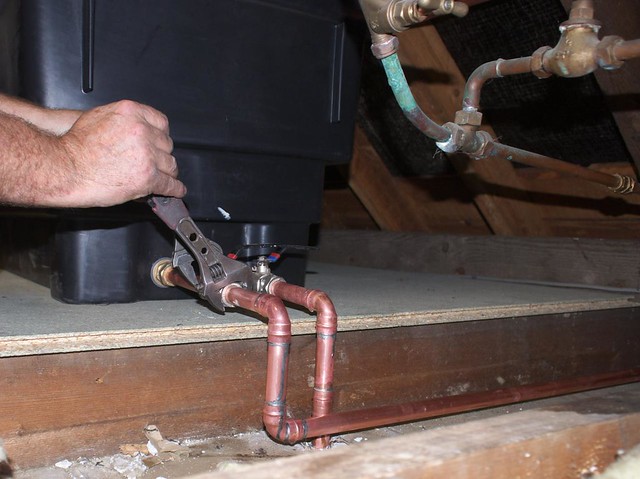
Here's the new tank in:
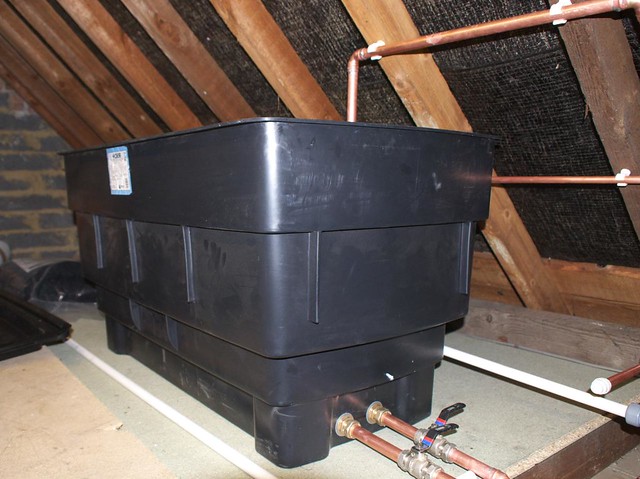
The pipe running over the top and into it is the vent from the hot water cylinder, in case we have the stove on too much and boil it!
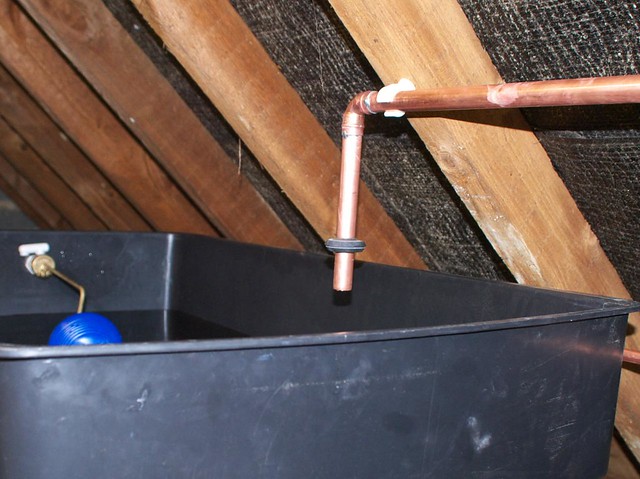
A new feed and expansion tank went in as well - this is for the circuit heated by the stove, and contains anti-corrosion chemicals:

Once the water tanks in the loft were all finished, a disinfectant was used in the cold water one, and then lids went on them both and they were insulated. This means that the cold water from the bathroom tap will be potable.
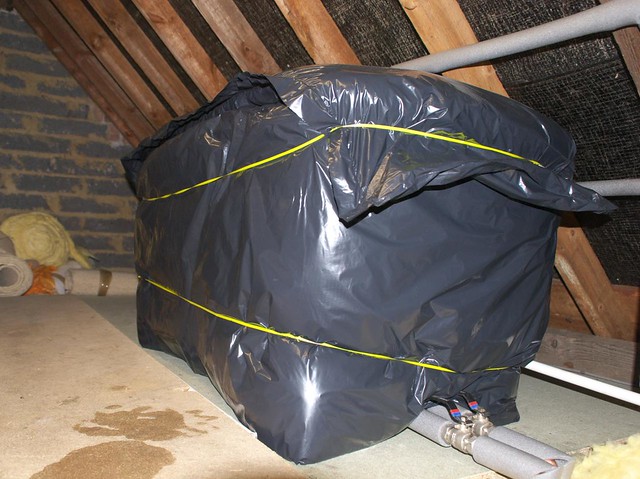
The last plumbing job upstairs was connecting the bathroom "heat leak" radiator. It's called this because it's purpose is to dump heat from the stove in case it is overheating and the power is off. It's connected in parallel with the hot water tank.

Downstairs, pipes were put on the back of the stove before it went into the fireplace, though there was some guesswork involved as we weren't exactly sure where it would sit until it was in. The pipes may look complicated, but this is according to the stove manufacturer's instructions, and it's the fact that the stove has three boilers and two circuits to feed that makes it look like this!
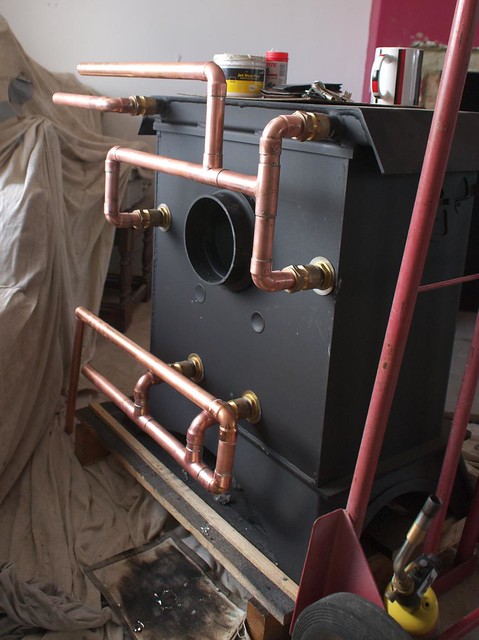
Only minor changes were needed once the stove was in:
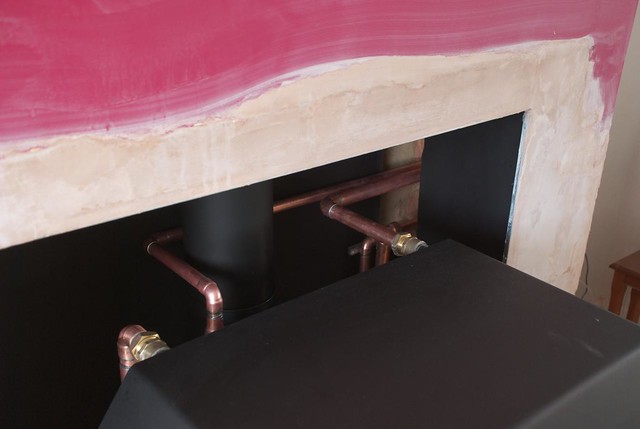
and then the pipes appeared through the slot in the side of the fireplace, ready for connection to the rest of the system:

These connections were made, with a pump in the return from the radiators. Then the electrical connections were added by our friend Chris, who's an electrician. There are two pipe thermostats, one to turn the pump off if the water's too cool (i.e. the fire's gone out), to avoid forming condensation on the boilers inside the stove, and the other to turn the pump on if the water's too hot (about 85C).
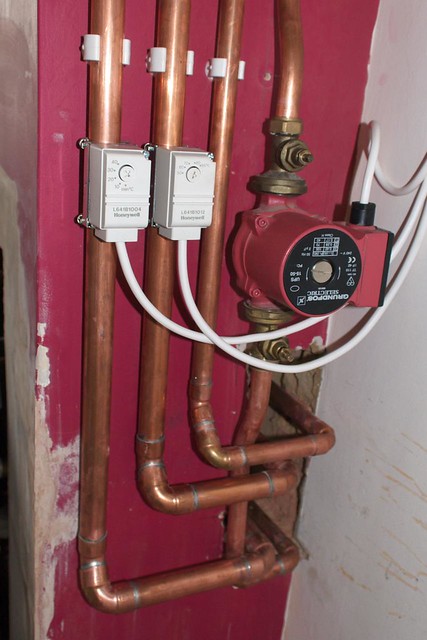
We're just using a simple controller for the radiator pump:
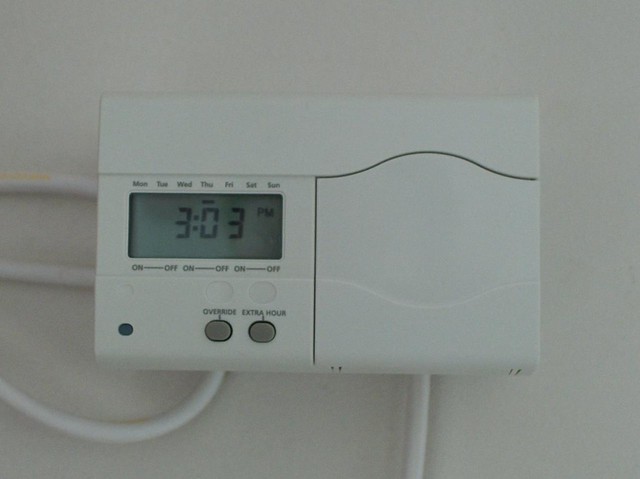
With all this in place, it was time to commission the system!

The fire lit beautifully:

and within a few minutes, warm water was rising up the gravity circuit and into the hot water cylinder coil. We were also pleased to find that if we left the thermostatic valves open on the upstairs radiators, some heat transferred to them even without the pump on. Not the full amount you'd get with the pump, but not bad for free! Mick has told us this might happen, he just couldn't be sure as the pipes to the radiators were just left as they were when we started.
Anyway, we're very pleased to be heating the house with our own wood now, and look forward to getting the solar water heating in a few days. Better get off to the wood to cut some trees down, we're going to need the logs for the winter after next...
Mike
Related posts:
Sunday 26 September 2010
Eco-refurbishment - plumbing and testing the wood stove
Subscribe to:
Post Comments (Atom)

No comments:
Post a Comment